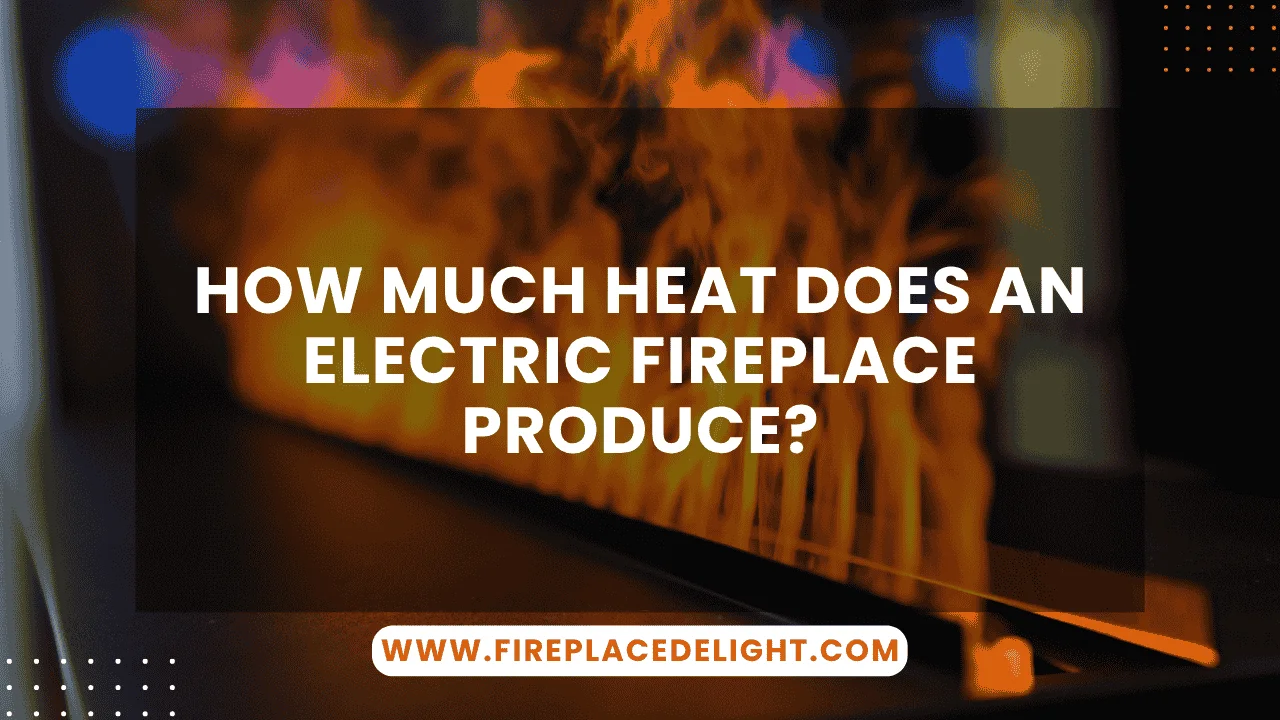Understanding how much heat an electric fireplace produces is essential before making a purchase. It’s not just about ambiance; if you’re looking to stay warm during winter, you’ll need to know if your electric unit can actually do the job. The truth is, electric fireplaces are designed as supplemental heat sources, but when used strategically, they can be surprisingly efficient and cost-effective.
Heat Output Metrics
BTU (British Thermal Units)
Most standard electric fireplaces generate around 4,000–5,000 BTU, which is suitable for heating a single room. Some high-performance units wired to 240 volts can produce up to 9,000 BTU, making them more appropriate for larger or more open spaces.
“For most residential spaces, a 5,000 BTU electric fireplace offers ample warmth without the need for additional heating,” notes Michael Green, a certified HVAC technician.
Watts
Electric fireplaces typically use between 1,000 to 2,000 watts, with 1,500 watts being the most common. That translates to roughly 4,600–8,900 BTU, depending on voltage and model. Wattage is important because it also impacts energy consumption and running cost.
Room Coverage by Heat Output
Small to Medium Rooms
If your space is about 400–500 sq ft, a 1,500 W (about 5,000 BTU) unit should keep things cozy. Bedrooms, home offices, or dens fall comfortably within this range.
High-Power Models
Units capable of delivering up to 9,000 BTU, often those wired to 240 V, can handle larger areas or open-concept living rooms, especially when insulation is good.
Read More: How to Reset an Electric Fireplace?
Heat Delivery Methods
Fan-Forced (Convection)
Fan-forced models use a blower to circulate warm air throughout the room. They’re fast and efficient and help keep the whole space evenly heated.
Infrared (Radiant)
Infrared models emit heat that directly warms people and objects, not the air itself. They’re great for instant comfort and can sometimes include fan-assisted modes for dual functionality.
“Infrared heat feels more immediate, especially in drafty areas, it’s like standing in the sun,” says interior heating consultant Tanya Redding.
Efficiency & Operating Costs
Energy Efficiency
Electric fireplaces are nearly 100% efficient, since there’s no chimney or vent, all the electricity used is converted into heat. This makes them more efficient than traditional fireplaces, which lose much of their heat through the flue.
Cost to Run
In the U.S., running a 1,500 W unit costs about $0.18 per hour at average electricity rates. In the UK, you’re looking at roughly £0.10–£0.20 per hour. That makes them an affordable option for zone heating.
Practical Considerations
Supplemental vs. Primary Heat
While electric fireplaces are ideal for zone heating, they aren’t typically used as whole-home solutions. They’re best in smaller, enclosed rooms where you can shut the door and retain warmth. Think of them as a companion to your main heating system.
Effect of Room Size and Insulation
Poor insulation or very large open spaces may reduce heating efficiency. If your room has lots of windows, high ceilings, or drafts, you may need a higher BTU model or additional insulation measures.
Summary Table
| Model Type | Power | BTU Output | Room Size Coverage | Efficiency | Running Cost |
| Standard Electric | 1,500 W | ~5,000 BTU | Up to 400–500 sq ft | ~100% | ~$0.18/hr or £0.10–£0.20/hr |
| High-End/240 V Units | 2,000 W | Up to 9,000 BTU | Larger rooms/open spaces | ~100% | Higher, depending on voltage |
Final Takeaways
Electric fireplaces typically produce between 4,000 and 9,000 BTU, with the average unit outputting around 5,000 BTU. That’s plenty for small to medium rooms, especially when combined with good insulation. Their near-perfect energy efficiency and low operational cost make them ideal for supplemental heating. If you’re looking for a reliable and attractive way to stay warm, an electric fireplace might just be the smartest upgrade you can make this winter.
- 27 Farmhouse Fireplace Ideas That Bring Warmth & Charm - August 18, 2025
- 25 Fireplace Lighting Ideas to Illuminate Your Hearth - August 7, 2025
- How to Replace an Electric Fireplace Switch? - August 5, 2025



